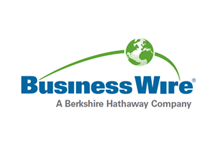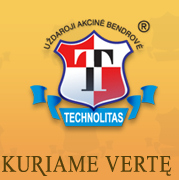Global Smart Thermostats Markets, 2021-2022 & 2023-2031 - Focus on Innovation Remains the Premiere Strategy of All Smart Thermostat Manufacturers - ResearchAndMarkets.com
The "Smart Thermostats Market Size, Market Share, Application Analysis, Regional Outlook, Growth Trends, Key Players, Competitive Strategies and Forecasts, 2023 To 2031" report has been added to ResearchAndMarkets.com's offering.
This study report represents an analysis of each segment from 2021 to 2031 considering 2022 as the base year. Compounded Annual Growth Rate (CAGR) for each of the respective segments estimated for the forecast period of 2023 to 2031.
Integration of wireless technologies including IoT, Wi-Fi, and Bluetooth in smart thermostats has enabled end-users to control, monitor and operate HVAC systems conveniently using connecting devices. Profound penetration of wireless technologies has significantly boosted demand for smart thermostats.
A leading smart thermostat company Nest Labs claims that a smart thermostat can allow up to 10-12% saving on heating and more than 15% on air conditioning. This results in an average savings of around US$ 130 to US$ 145 per year for an individual home. The appealing statistics and merits offered by smart thermostats have encouraged people across the globe to incorporate smart thermostats in their HVAC systems.
In 2015, approximately 5 Mn smart thermostats were sold worldwide and the number is expected to grow multifold in the coming years. Thus, the overall market for smart thermostats is expected to grow by leaps and bounds throughout the forecast period.
The global smart thermostat market is highly fragmented and characterized by several international players. Intense competition in this highly fragmented market is keeping leading players on their toes with respect to technology development, product quality, and service to their customers.
Focus on innovation remains the premiere strategy of all smart thermostat manufacturers. In addition, providing customized solutions according to the need of consumers is another important strategy adopted by smart thermostat manufacturers to maintain their dominance in the market.
Key questions answered in this report
- What are the key micro and macro environmental factors that are impacting the growth of Smart Thermostats market?
- What are the key investment pockets with respect to product segments and geographies currently and during the forecast period?
- Estimated forecast and market projections up to 2031.
- Which segment accounts for the fastest CAGR during the forecast period?
- Which market segment holds a larger market share and why?
- Are low and middle-income economies investing in the Smart Thermostats market?
- Which is the largest regional market for Smart Thermostats market?
- What are the market trends and dynamics in emerging markets such as Asia Pacific, Latin America, and Middle East & Africa?
- Which are the key trends driving Smart Thermostats market growth?
- Who are the key competitors and what are their key strategies to enhance their market presence in the Smart Thermostats market worldwide?
Smart Thermostats Market: Competitive Analysis
- Market Positioning of Key Smart Thermostats Market Vendors
- Strategies Adopted by Smart Thermostats Market Vendors
- Key Industry Strategies
- Tier Analysis 2022 Versus 2031
Companies Mentioned
- Centrica Hive Limited
- Control4
- Ecobee
- Emerson
- Google Nest
- Honeywell Home
- Johnson Controls
- Lux Products Corporation
- Netatmo SA
- Resideo Technologies Inc.
- Siemens
- Tado GmbH
- Vine Connected Corporation
For more information about this report visit https://www.researchandmarkets.com/r/b9lw64
About ResearchAndMarkets.com
ResearchAndMarkets.com is the world's leading source for international market research reports and market data. We provide you with the latest data on international and regional markets, key industries, the top companies, new products and the latest trends.
View source version on businesswire.com: https://www.businesswire.com/news/home/20230628566981/en/





